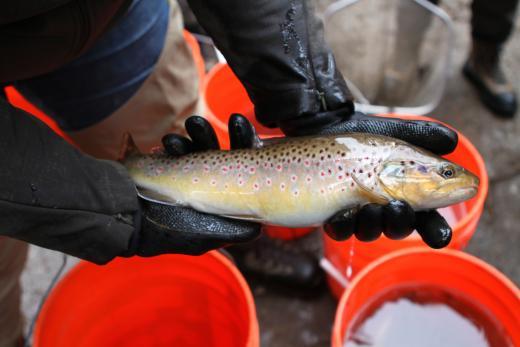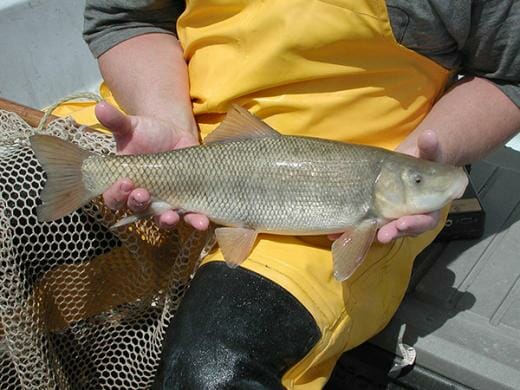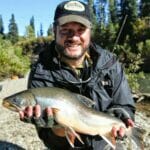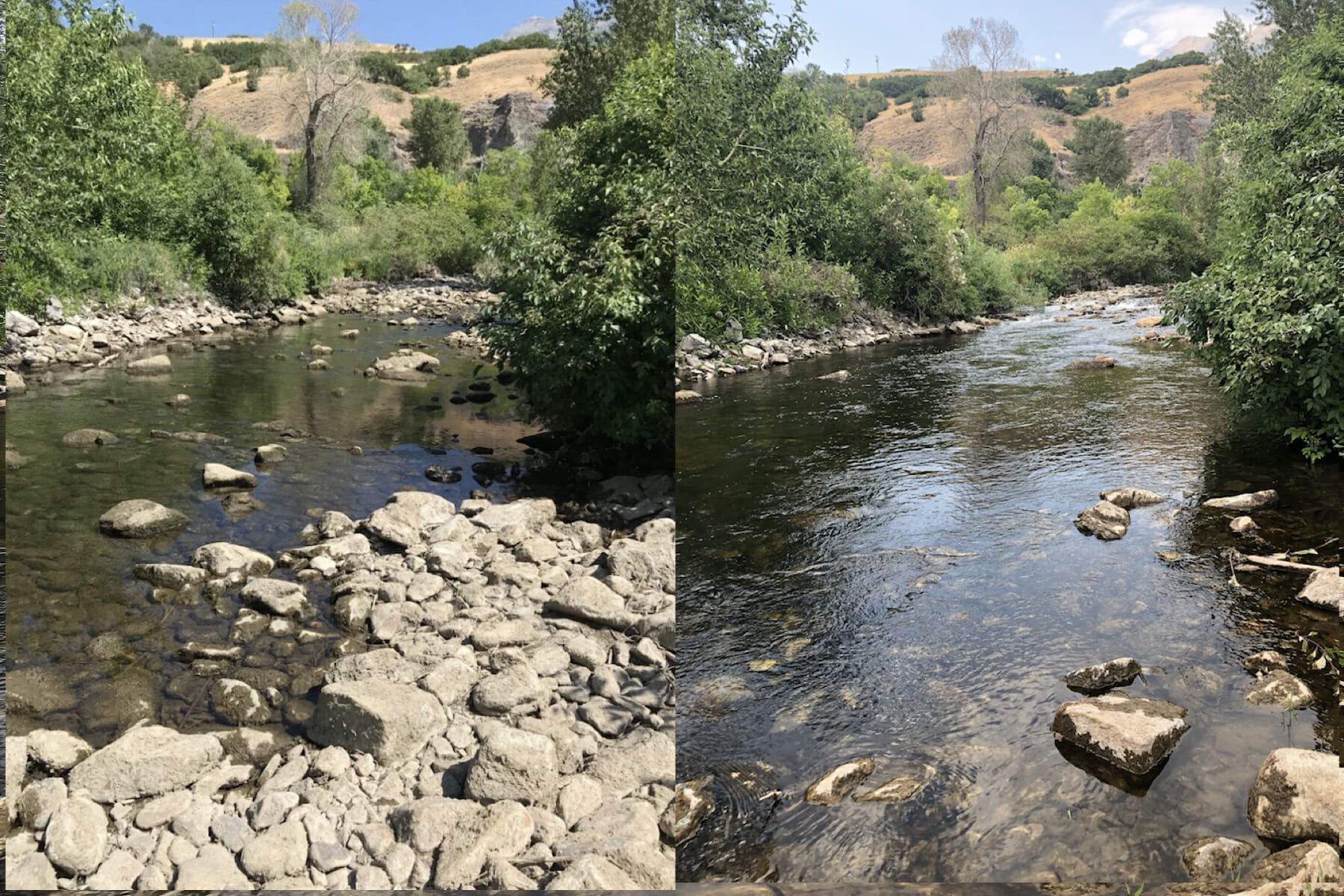A side-by-side before and after illustration shows how much water was added to help sportfish in the Provo River thanks to extra flow from an endangered fish program. Photos by Brian Wimmer/Alpine Anglers TU Chapter.
By Brett Prettyman
Anglers are almost always the first to notice issues in the environment. When anglers on the popular Lower Provo River in Utah noticed an ever-decreasing water level below a diversion they started wondering what would happen to the trout.
The wondering led to questions on how to remedy the situation, but extra water is a tough thing to come by in the West; particularly on dry years like this one.

A typical brown trout on the Lower Provo River in Utah. This fish was caught as part of a survey and released. Scott Root/Utah Division of Wildlife Resources.
Brian Wimmer leads the Alpine Anglers Trout Unlimited Chapter and works as a guide on the Provo River. When he and other concerned anglers noticed fish being trapped in shallow pools on the Provo River near the end of the canyon they started looking into the issue.
He reached out to Mike Slater, the local fisheries biologists with the Utah Division of Wildlife Resources, and Jordan Nielson, a Water and Habitat Project Manager for Trout Unlimited based in Utah. A meeting was arranged, and any party with possible interest was invited to attend.
The group was facing a daunting challenge. Water rights holders on the Provo River receiving water at the diversion where the low flows started had already seen their deliveries reduced by 50 percent due to limited resources.
The hero turned out to be another fish.

June suckers are native to Utah Lake and utilize the Provo River for spawning. June Sucker Recovery Implementation Program photo.
The federally endangered June sucker is a native fish to Utah Lake and the Provo River, a tributary to the lake, is an important spawning location for the unique fish.
Officials from the June Sucker Recovery Implementation Program realized Provo River flows reserved for low water situations could perhaps be diverted higher on the Provo River to help sport fish. The small, but important, supplemental flow has traditionally been used on the lowest reaches of the Provo cloest to the lake.
The Recovery Program, Trout Unlimited and the Utah Division of Wildlife worked with local water managers and figured out a way to move the supplemental flows above the diversion to benefit trout. The exchange of water more than doubles the amount of water in the impacted reach. Flows were increased from 7 cfs (cubic-feet-per-second) to 17 cfs.
“There was barely enough flow to continue to support a few fish at the mouth of the canyon,” Nielson said. “The proactive approach we are taking to the flow problem caused by drought shows how an endangered species like the June sucker can help our cherished sportsfish hang on through the hot, dry season. We are really grateful to our partners at the June Sucker Recovery Program and our chapter members for working together.”
Christoper Keleher, director of JSRIP, is excited to see the program help a wide range of species.
“By taking an ecosystem approach to species recovery and partnering with groups like Trout Unlimited, the benefits of our projects extend beyond June sucker and can work to improve conditions for all the fish and wildlife that depend on the river,” he said.
Trout Unlimited, UDWR, and the JSRIP will monitor conditions in this stretch of river for the remainder of the summer. Together they will determine when natural flows in the river improve and the use of supplemental water is no longer needed. The need will likely extend through the end of September depending on the demand for irrigation water.
Brett Prettyman is the Intermountain Communications Director for Trout Unlimited. He is based in Salt Lake City.



